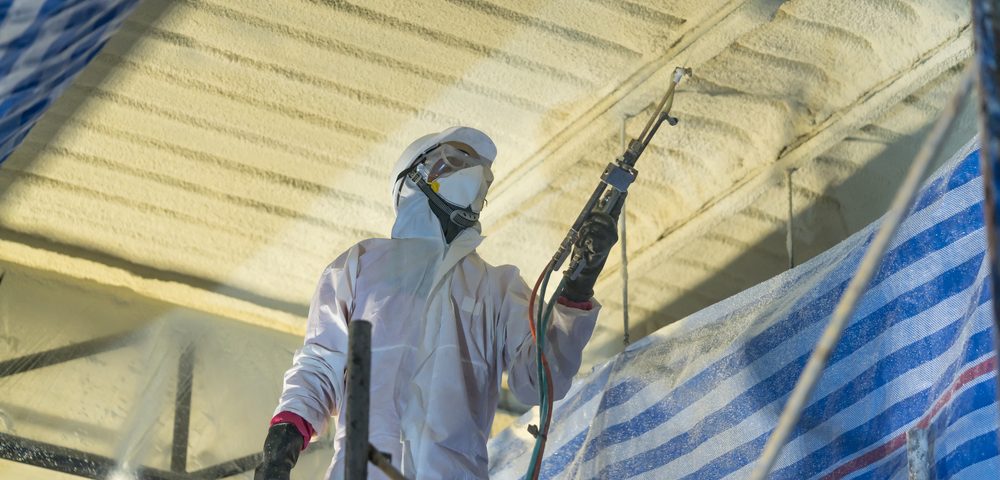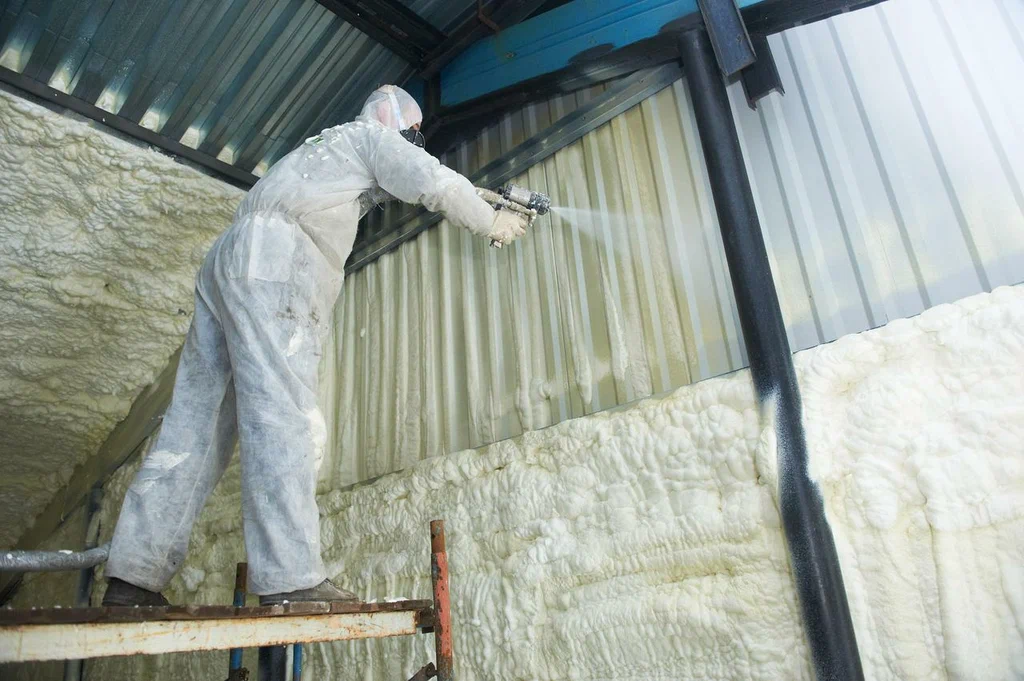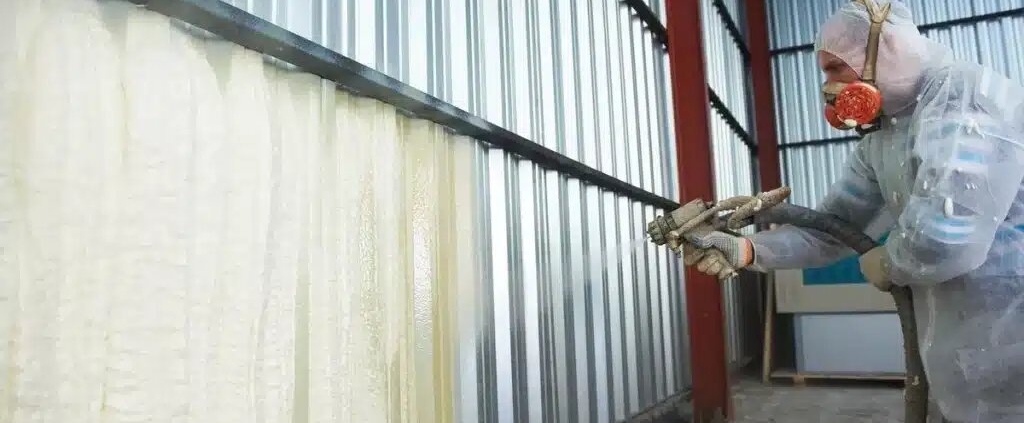Achieving Superior R-Value in Commercial Steel-Frame Buildings
Commercial steel-frame buildings offer durability, speed of construction, and flexibility of design. Yet, their thermal performance is often compromised by the high conductivity of steel, which allows heat to pass through structural elements. This results in reduced R-values, increased energy consumption, and inconsistent indoor comfort.
Improving R-value in steel-frame buildings requires targeted insulation methods, air sealing, and moisture control strategies. This article explains how property owners and facility managers can optimize R-values, compares insulation materials, and outlines practical upgrades like commercial spray foam insulation for long-term efficiency.
Why R-Value Is a Critical Factor in Steel-Frame Buildings
R-value measures resistance to heat transfer, but in steel-frame buildings, performance can be lower than expected because steel acts as a thermal bridge. This means insulation must be installed strategically to compensate for heat loss.
The Impact of Thermal Bridging
When steel studs conduct heat, they bypass insulation placed between them. This significantly lowers the effective R-value of walls and roofs, even if the insulation material itself has a high rating.
Measured vs. Effective R-Value
The labeled R-value of insulation reflects its performance in ideal conditions. In steel-frame construction, the effective R-value is usually lower because of structural thermal bridging. Understanding this difference is crucial for selecting materials and installation methods.
Energy and Comfort Implications
Buildings with low effective R-values require more energy for heating and cooling. Occupants experience temperature fluctuations, and HVAC systems work harder, leading to increased operational costs.

Insulation Solutions for Higher R-Values in Steel Structures
Improving R-value in commercial steel-frame buildings depends on using insulation systems that reduce thermal bridging and provide consistent coverage.
Continuous Insulation Systems
Continuous insulation places insulation materials outside the steel framing, creating a thermal break. Rigid foam boards and mineral wool panels are commonly used for this method because they prevent heat transfer through studs.
Spray Foam Applications
Closed-cell spray foam delivers high R-values per inch while also sealing air leaks. It adheres directly to steel surfaces, creating a continuous layer of insulation that reduces thermal bridging and moisture risk.
Hybrid Approaches
Combining cavity insulation (fiberglass or mineral wool) with continuous exterior insulation provides balanced performance. This dual approach helps meet energy codes and improves both R-value and indoor comfort.
| Insulation Type | R-Value per Inch | Thermal Bridging Resistance | Moisture Control | Installation Suitability |
|---|---|---|---|---|
| Fiberglass Batts | 2.9 – 3.8 | Low | Low | Easy, but limited impact |
| Mineral Wool | 3.0 – 3.3 | Medium | High | Moderate |
| Rigid Foam Board | 4.5 – 6.0 | High | High | Excellent for exteriors |
| Closed-Cell Spray Foam | 6.0 – 7.0 | Very High | High | Ideal for steel frames |
Moisture and Condensation Management in Steel Buildings
Along with thermal resistance, moisture control is vital in steel-frame structures. Poor insulation can lead to condensation, which corrodes steel components and reduces building durability.
Vapor Barriers and Air Sealing
A well-installed vapor barrier reduces the migration of warm, moist air toward cooler steel surfaces. Air sealing further limits condensation risks by preventing uncontrolled airflow through joints and seams.
Roof and Wall Assembly Considerations
Roofs and exterior walls face the highest risk of condensation. Insulated panels and reflective vapor barriers improve performance by keeping interior conditions stable.
Long-Term Maintenance Benefits
Proper insulation and moisture control not only improve R-value but also protect steel components from rust and corrosion, extending the service life of the building.

Energy Efficiency Outcomes from R-Value Improvements
Upgrading insulation in steel-frame buildings delivers measurable benefits beyond comfort.
Lower Operating Costs
Reducing heat transfer means HVAC systems operate more efficiently, lowering monthly energy expenses for property owners and tenants.
Compliance with Energy Codes
Many commercial structures must meet strict building energy codes. Achieving superior R-values ensures compliance and avoids costly retrofits later.
Improved Occupant Comfort and Productivity
Consistent indoor temperatures create more comfortable environments for employees and customers, which can positively affect productivity and satisfaction.
Practical Steps for Property Owners
Property owners looking to improve R-value in commercial steel-frame buildings should consider a systematic approach.
Energy Audits and Thermal Imaging
An energy audit identifies weak points in insulation coverage. Thermal imaging highlights areas of significant heat loss, guiding retrofit strategies.
Retrofit vs. New Construction Approaches
In retrofits, spray foam and rigid board systems are often the most effective because they require minimal structural changes. In new construction, integrated continuous insulation systems can be designed from the start.
Professional Installation and Quality Control
Insulation effectiveness depends heavily on proper installation. Gaps, compression, or misalignment reduce R-values significantly, making expert installation critical.
Conclusion
Achieving superior R-value in commercial steel-frame buildings requires more than just adding insulation materials. The conductive nature of steel means thermal bridging must be addressed with strategies like continuous insulation, spray foam applications, and hybrid systems. Effective moisture control ensures long-term structural protection, while air sealing improves overall efficiency.
By applying these methods and partnering with professional insulation services, property owners and facility managers can reduce operating costs, extend the life of steel structures, and create comfortable, energy-efficient environments. Strong R-values are not just about meeting code—they are about building resilience and performance that lasts.
FAQs
How does steel framing affect R-value?
Steel framing creates thermal bridges that allow heat to bypass insulation, lowering the effective R-value compared to the rated value of the material.
What insulation is best for steel-frame buildings?
Closed-cell spray foam and rigid foam boards are the most effective because they reduce thermal bridging and provide continuous coverage.
Can fiberglass be used in steel structures?
Yes, but fiberglass alone does little to prevent thermal bridging. It performs better when paired with continuous exterior insulation.
How does insulation prevent condensation in steel buildings?
Insulation reduces temperature differences that cause condensation, while vapor barriers and air sealing limit moisture movement.
Why is continuous insulation recommended for steel structures?
Continuous insulation creates a thermal break that stops heat from transferring through steel studs, improving effective R-values and energy performance.
Reviewer: With 11 years in the spray foam field, Aiden Baker reviewed this content and provided advice on building steady growth through practical, honest communication.




Leave a Reply
Want to join the discussion?Feel free to contribute!